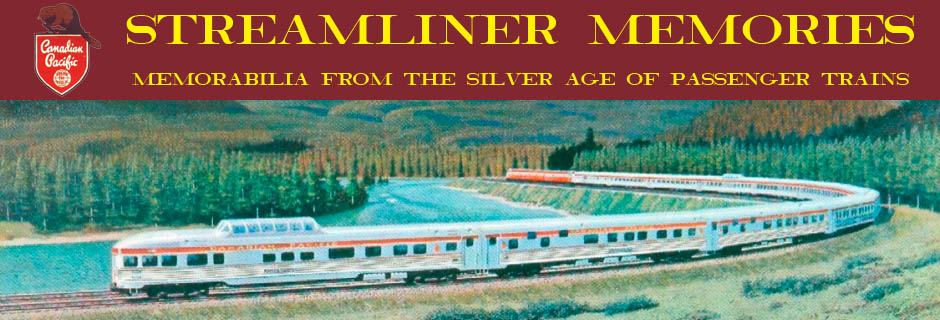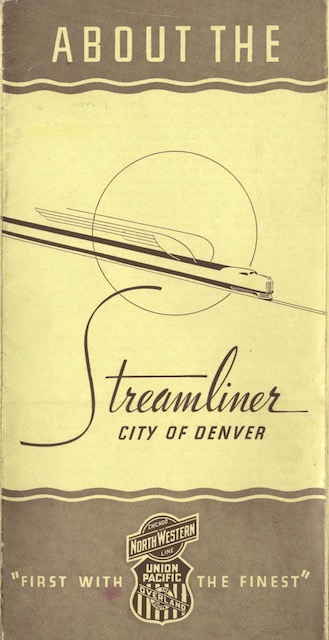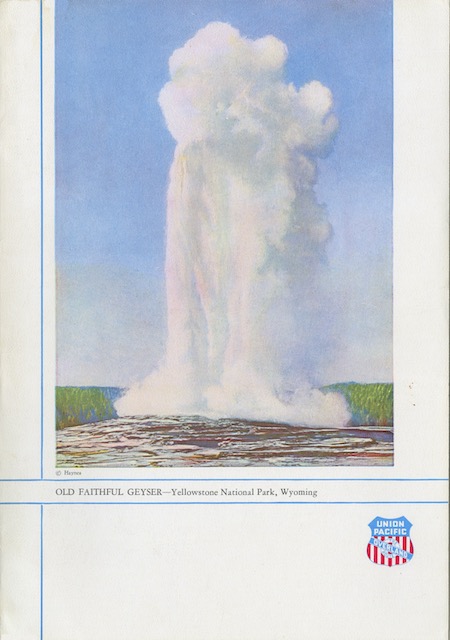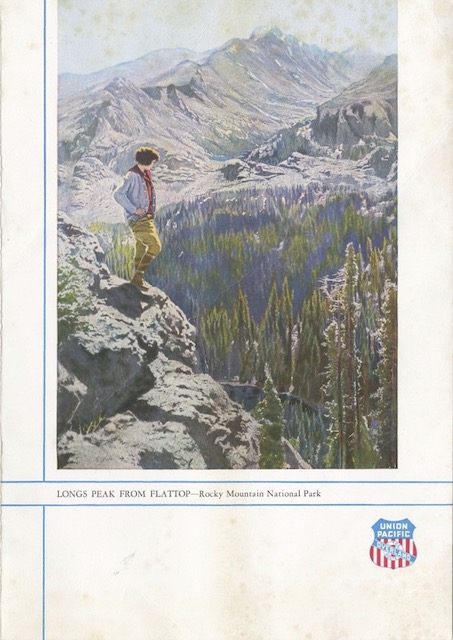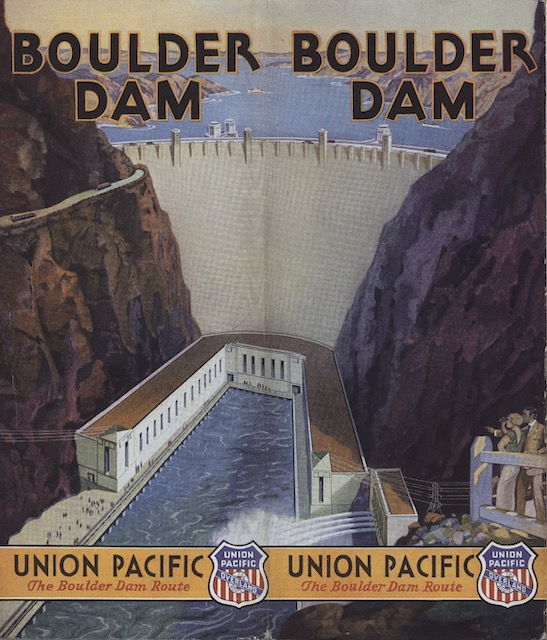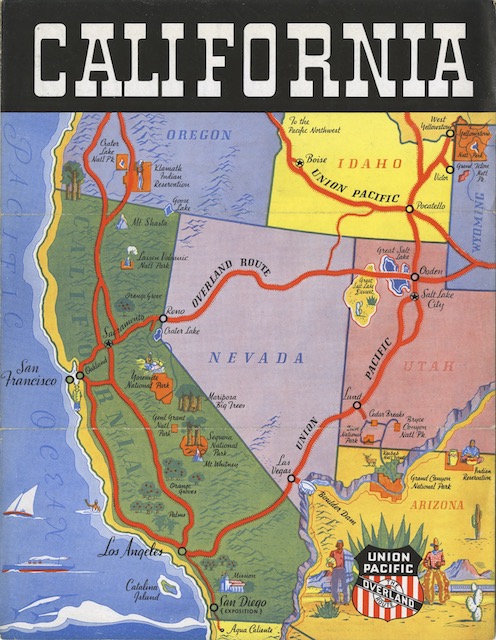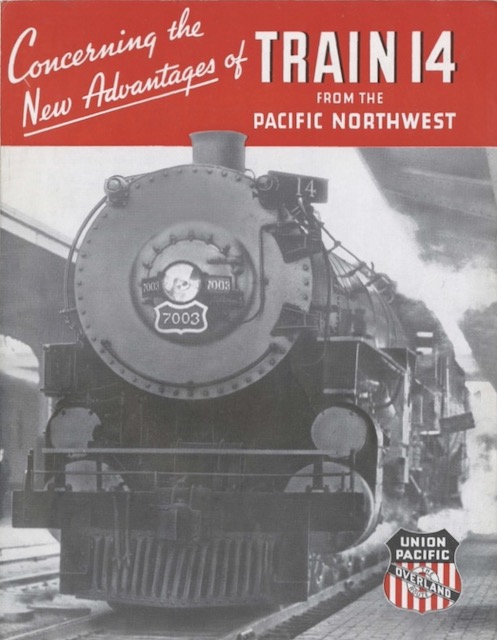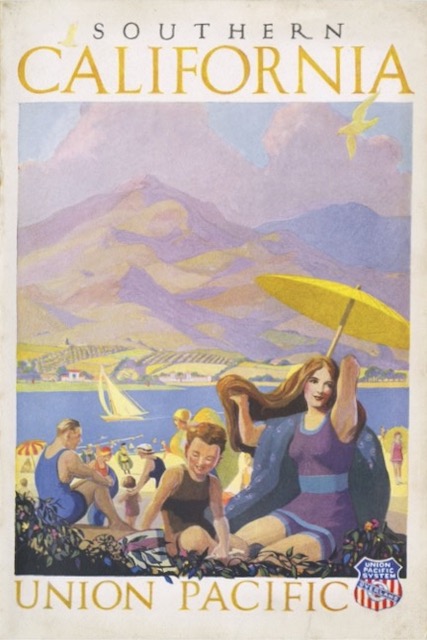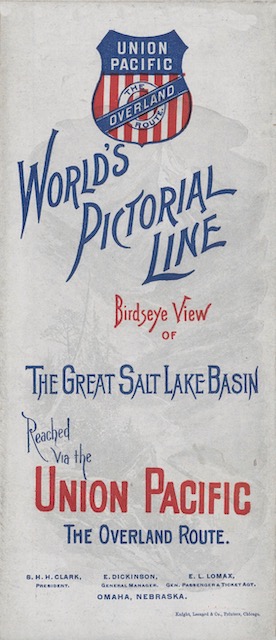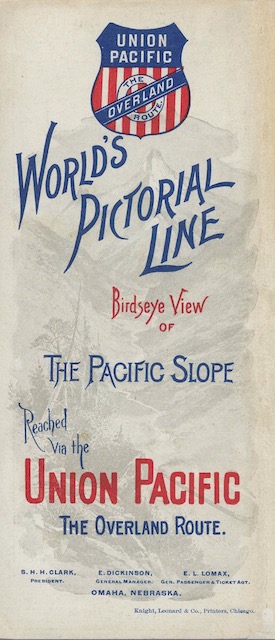With close to 650,000 residents (as of 2021), Las Vegas is the nation’s 25th-largest city. But in 1939, when Union Pacific issued this brochure, it had barely 8,000 residents, making it “still a frontier town,” according to this brochure. The completion of Boulder/Hoover dam just three years before (along with the invention of air conditioning) enabled the city to rapidly grow into one of the nation’s leading entertainment centers.
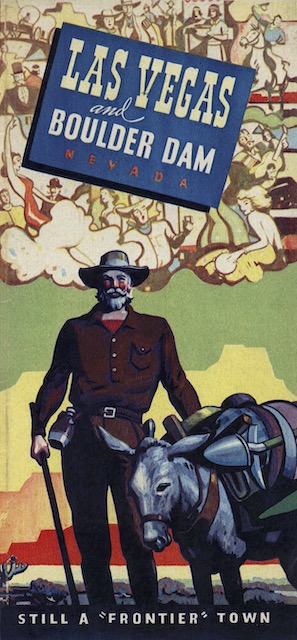 Click image to download a 19.6-MB PDF of this brochure, which is from the David Rumsey Map Collection.
Click image to download a 19.6-MB PDF of this brochure, which is from the David Rumsey Map Collection.
The colorful map in this brochure includes cute pictures of yellow Union Pacific streamliners, a couple getting a divorce at the Clark County Courthouse, and even a scantily clad woman enticing a man to enter her doorway over which is mounted a red light. The map barely hints at casinos or gambling but instead focuses more on natural resources such as Red Rock Canyon, Death Valley, Zion, and of course Boulder Dam. Similarly, the photo collage on the back has one picture of a roulette table and 18 of scenery, a rodeo, and the dam.
The map and cover art are signed Raymond Winters, who was born in Denver in 1892 and moved to Los Angeles in 1915. As an artist, he often illustrated the covers of Westway magazine, which then as now was published by the Automobile Club of Southern California. Sadly, he died in 1939, the same year this brochure was published.
